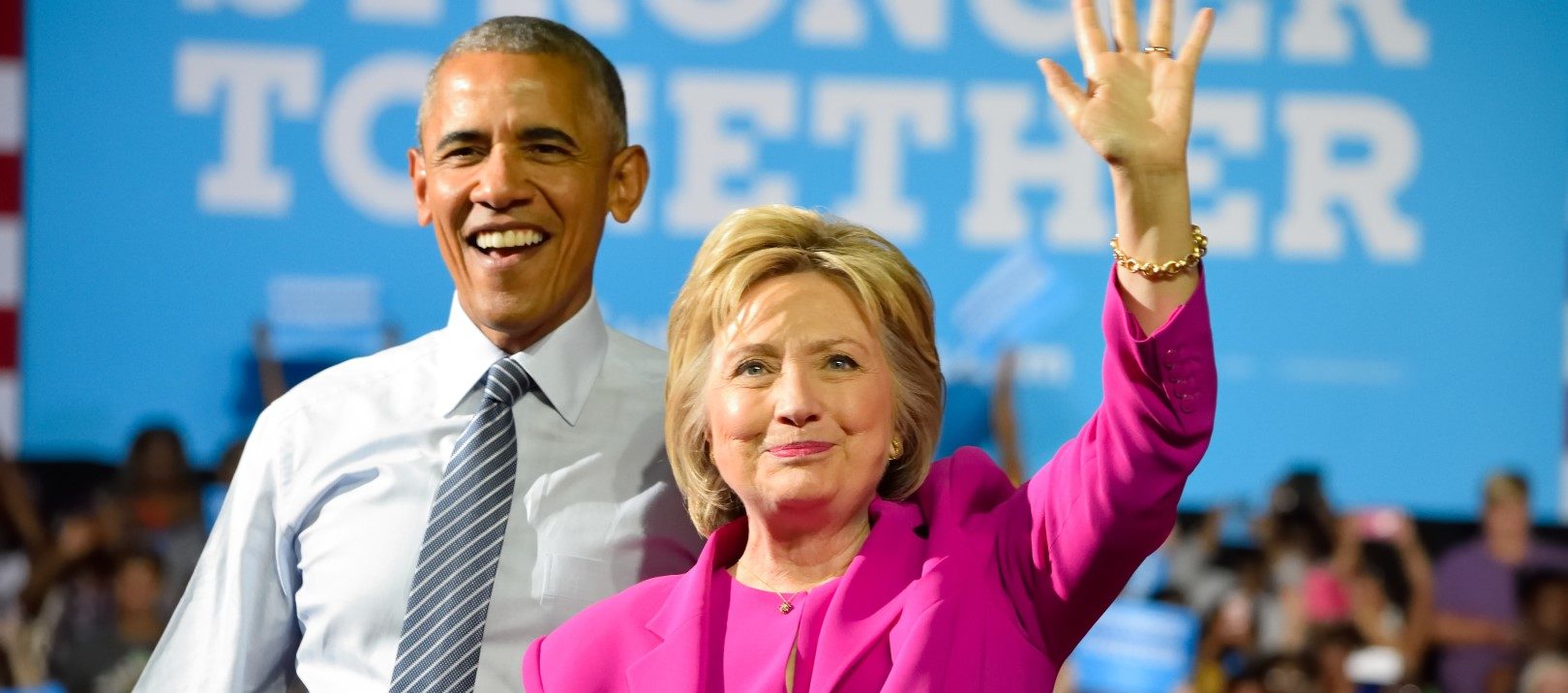
Gone is the old President Barack Obama, who approached campaigning for other Democrats as a chore. The new Obama is throwing himself into rebuilding his party in his final months in the White House and vowing to keep at it once he’s left.
With his popularity higher than it’s been in years, Obama has been campaigning for Hillary Clinton with gusto, and White House officials said he’ll be traveling to help the Democrat nearly every day until Election Day, Nov. 8. He was paying his second visit in as many weeks to battleground Florida on Friday after releasing a new ad explicitly arguing a vote for Clinton was a vote for his legacy.
“Send a message, by voting for Hillary Clinton,” Obama says in the ad.
He’ll return to Florida yet again next week, and go to Ohio and North Carolina to boost Clinton. And in a less-expected development, he’s putting a similar emphasis on the party’s other candidates, cutting nearly two-dozen TV and radio ads for House and Senate candidates and holding a similar number of fundraisers.
Obama’s long-term goal: ensuring Democrats don’t get railroaded when congressional maps are redrawn again in 2020 as, they say, they were after the 2010 U.S. census. He’s already committing to spend part of his post-presidency developing the National Democratic Redistricting Committee, chaired by his former attorney general, Eric Holder.
So when Obama campaigns for Clinton in Orlando on Friday, Democrats will also be using the visit to boost Democrats in two Orlando-area state House races and one state Senate race that they see as pivotal toward retaking control of Florida’s legislature by 2020. Like most states, Florida gives the power to redraw its maps to state lawmakers.
Holder’s new group this year shared detailed maps with the White House outlining areas where Obama could boost Democratic candidates up and down the ballot, said former Rep. Mark Schauer, D-Mich., the group’s senior adviser.
David Simas, the White House political director, called the 150 state legislative races where Obama is endorsing candidates this year a “preview of coming attractions.”
“It’s clear these races are going to become much, much more important,” Simas said. “As a reaction to that reality, he’s been very clear with us, not only this year, to expect this is something he’s going to take a personal interest in.”
It wasn’t always this way.
For years, Democrats griped privately that Obama had allowed the party’s political apparatus to fall into disrepair, in part due to his decision after being elected not to fold his own campaign assets into the Democratic National Committee. After all, it was Obama who had brought new voters into the party during his rise to the White House, not the other way around.
While he raised money for Democratic campaign groups ahead of every election, Obama generally took a hands-off approach to the strength of the party itself, current and former Democratic officials said. The party fell heavily into debt in 2012 and it took years to pay off.
Obama’s bid to restore balance in redistricting speaks to the biggest obstacle of his presidency, and one he was never able to fully overcome: a Congress occupied largely by politicians from districts that lean so heavily Republican or Democrat that they have little incentive to compromise with the other side.
Republished with permission of the Associated Press.



